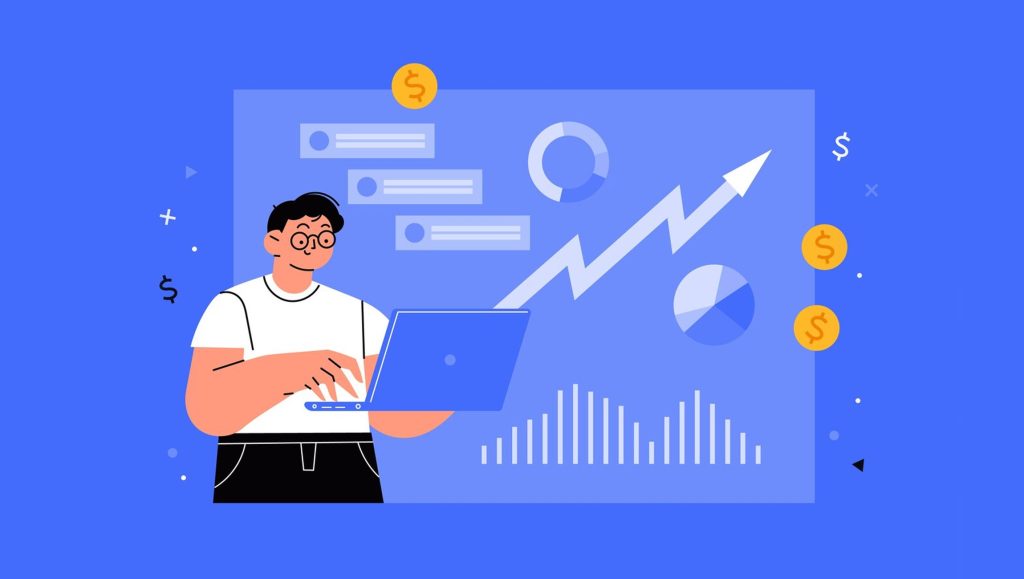*The primary author of this piece is Vaishnavi Vaidya
____
Who wouldn’t aspire to boost sales and clinch those larger deals? It’s a universal pursuit across businesses of all sizes. The evolution and transformation of sales strategies today are truly remarkable! Nowadays, every potential buyer, prospect, or visitor to your business arrives armed with a significant amount of research. It’s crucial to treat them with integrity and intelligence, recognizing that they often possess insights that rival your own.
While sales and revenue are inherently intertwined, the concept of revenue can vary greatly among different businesses. The interpretation of revenue in the business world is multifaceted, with diverse perspectives among businesses and their respective teams regarding what revenue truly entails and how to enable its growth.
Revenue, in its simplest form, is the income generated by a business through the sale of its goods or services. It’s the lifeblood of any organization, as it represents the financial return on all its efforts.
There are two factors that makes revenue enablement wholesome:
- Components: Revenue comes from various sources, such as selling products or services, subscriptions, commissions, or even interest earned on investments.
- Importance: Revenue allows businesses to cover their costs, invest in growth, and ultimately generate a profit. It’s a key metric for measuring a company’s financial health and performance.
In the world of sales, where targets and quotas reign supreme, there’s a crucial force working behind the scenes to empower salespeople and fuel success: revenue enablement. Revenue enablement is the missing piece that strengthens the entire revenue structure and ecosystem.
It’s a strategic approach that goes beyond simply equipping sales reps with products and brochures. Revenue enablement focuses on providing them with the resources, knowledge, and processes they need to consistently convert leads and close deals.
Revenue enablement is a comprehensive process that integrates all facets of sales, encompassing customer-facing metrics and revenue-related functions. This encompasses customer success, marketing collaborations, pre-sales and post-sales activities, as well as all other components contributing to revenue generation.
What role does revenue enablement play for sales?
Revenue enablement acts as a supportive force within your sales organization, ensuring your team has everything they need to perform at their peak and drive revenue growth. Here’s a breakdown of its key functions in sales:
Equipping Your Sales Force:
- Content Creation: Revenue enablement provides high-quality sales collateral like brochures, presentations, battle cards, and email templates. These materials equip salespeople to effectively engage prospects, highlight product value propositions, and overcome objections.
- Training and Development: Ongoing training programs are crucial for honing sales skills, addressing knowledge gaps, and keeping salespeople updated on industry trends and competitor strategies. Revenue Enablement designs and delivers these programs, ensuring your team stays sharp and adaptable.
- Technology Enablement: The right tools are essential for streamlining workflows and maximizing productivity. Revenue enablement focuses on providing salespeople with effective technology like CRM systems, sales automation platforms, and communication tools. They also ensure proper integration and training on how to leverage these tools effectively.
Optimizing sales processes:
- Sales Methodology: A clear and consistent sales or salestech methodology provides a framework for sales reps to follow throughout the sales cycle. Revenue enablement establishes and implements this methodology, ensuring everyone is on the same page and maximizing results. This can involve methodologies like challenger sales or MEDDIC.
- Data and Analytics: Data is king in today’s salestech landscape. Revenue enablement provides sales reps with data-driven insights into customer behavior and sales performance. This allows for targeted outreach, strategic decision-making, and continuous improvement of sales processes.
Beyond the Basics:
- Coaching and Mentorship: Revenue enablement doesn’t stop with equipping salespeople with tools and knowledge. It can also involve providing ongoing coaching and mentorship to help salespeople refine their skills, address challenges, and improve their performance.
- Alignment and Collaboration: Revenue enablement fosters collaboration between sales and other departments like marketing and customer success. This ensures a unified approach to customer engagement and a seamless customer journey.
Read More: SalesTechStar Interview with Kate McCullough, Co-founder and Chief GTM Officer at Nue.io
The Impact of Revenue Enablement:
Revenue enablement empowers your sales team to:
- Increase Win Rates: A well-equipped and well-trained sales force is more likely to convert leads and close deals.
- Shorten Sales Cycles: Streamlined processes and readily available resources lead to faster conversion times.
- Improve Customer Experience: Empowered salespeople can provide a more personalized and valuable experience to customers.
- Boost Team Morale: Targeted training and support keep sales reps motivated and confident in their abilities.
Why sales enablement plays a critical role in sales:
The customer journey is no longer a linear model today; it’s an infinity model because customers can enter and exit at any point in time. Just because you are closing the deal doesn’t mean that you don’t have to nurture customers later. Nothing is above the customer experience pre and post sales.
Only when you immerse yourself in the sales realm do you truly grasp that you represent the voice of the customers and their needs. Thus, effective revenue enablement strategies go beyond mere revenue generation; they entail a deep understanding of the customer’s buying journey.
Revenue enablement deeply touch three significant factors in the process:
- Sales Ops
- Marketing Ops
- Customer Success
Revenue enablement serves as a vital force in bolstering and empowering sales operations or teams, akin to the role of sales enablement. It provides sales reps with essential resources such as training, coaching, content, and technological support. Furthermore, alignment with customer-facing departments ensures that prospects and customers receive exemplary service throughout their journey through the sales funnel, thereby offering additional advantages to the sales team.
The customer success team is a pivotal yet often overlooked component of the buying funnel. Beyond the initial sale, their role becomes even more crucial. Savvy marketers recognize the significance of the customer success team and actively champion their efforts to nurture converted prospects throughout their entire customer journey.
Revenue enablement plays a vital role in empowering customer success teams, ultimately resulting in amplified revenue streams derived from recurring sales, upsell opportunities, and the cultivation of long-term customer loyalty.
Revenue enablement platforms:
“Less is more” serves as a guiding principle for every sales representative and marketer when leveraging AI in sales and marketing automation. The focus should always be on how AI integrates seamlessly with CRM systems, how it enriches data, and what impact it has on overall operations. Considering the interconnected nature of various applications and systems at higher levels, it’s crucial to ensure that the tools used are compatible and effectively utilized. Instead of relying on a single tool that offers mediocre performance across multiple functions, it’s advisable to opt for one or two tools that excel in specific areas. Revenue enablement platforms are available in diverse configurations tailored to address specific requirements.
Here’s a breakdown of some key categories:
1. Content Management Platforms (CMPs):
- Focus: Centralized repository for all your sales collateral – brochures, presentations, battle cards, email templates, etc.
2. Sales Coaching & Learning Platforms:
- Focus: Providing on-demand training modules, coaching videos, and role-playing simulations.
3. Sales Automation Platforms:
- Focus: Streamlining repetitive tasks like lead nurturing, email follow-ups, proposal generation, and scheduling.
4. Sales Engagement Platforms (SEPs):
- Focus: Boosting multi-channel communication and engagement with prospects and customers.
5. Analytics & Reporting Platforms:
- Focus: Providing data-driven insights into sales performance, content effectiveness, and customer engagement.
Conclusion:
Gartner describes revenue enablement as “expanding sales enablement’s purview from sales-only to supporting all revenue-generating channels and customer-facing, revenue-generating roles.”.
Revenue enablement and relevant revenue platforms have a drastic impact on your sales stack. It is not just an additional expense; it’s a strategic investment in the long-term success of your sales organization. It harnesses revenue technology and employs data-driven analytics across the entirety of the customer journey, aiming to refine and optimize enablement initiatives continuously. By empowering your team with the right tools, training, and support, you can unlock their full potential and drive sustainable revenue growth for your business.
Read More: Key Tactics for Closing Sales Deals and Their Impact





















